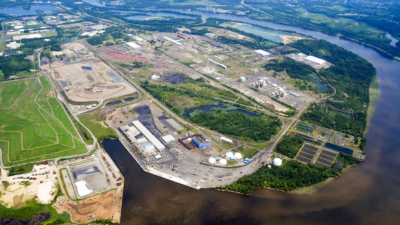Following a year of unprecedented industrial activity, the first half of 2021 continues to see insatiable demand for industrial space from bulk occupiers (companies occupying more than 100,000 square feet) across all regions of the U.S. In some markets, the availability of quality space is limited, prompting new builds in both core markets and smaller secondary industrial markets like Memphis, Kansas City, Louisville and Salt Lake City. Through midyear, occupier activity in bulk industrial space totaled 232.2 million square feet, compared to 2020’s 243.7 million square feet, just 4.7% lower than the record-setting pace a year ago. In addition, a total of 476 industrial (warehouse, manufacturing and flex) new leases, renewals and user sales were transacted in Q2 2021, well above the 348 transactions recorded at the same time in 2020. However, occupiers’ footprints have increased slightly as the average size of a bulk transaction in Q2 2021 was 285,000 square feet, 2% higher than at the beginning of 2020.

The pandemic-fueled dominance of e-commerce occupiers has persisted into 2021, as Amazon continues to snatch up space in all corners of the U.S. Amazon’s record-setting industrial grab of 2020 continues into the midyear, as the company occupied 33 million square feet year-to-date, 23% higher than this time last year as Amazon, unsurprisingly, remains at the top of the bulk occupier list. As supply chains continue to be retooled and the need for reliable distribution channels is paramount, third-party logistics (3PLs) and packaging companies accounted for nearly 30% of all bulk activity at midyear. General retail and wholesale firms came in at a distant second, accounting for 18.2% of activity. This is relatively unchanged from the 18.1% that retail represented at the end of 2020.
Amazon’s dominance was represented by the 77 transactions the company signed at midyear – the only e-commerce firm making the top 10 list. Rounding out the top 10 tenants, 3PL companies tallied 14.5 million square feet and included companies like XPO Logistics (6.7 million square feet), FedEx (3.9 million square feet) and DHL Supply Chain (2.1 million square feet). Four general retail and wholesale companies also made it to the top 10 at midyear – Walmart (4.3 million square feet), Lowe’s Home Improvement (2.2 million square feet), Harbor Freight Tools (1.6 million square feet) and Medline (1.6 million square feet).

Although bulk transactions slowed slightly at midyear, a few industries saw a year-over-year increase in square footage occupied. The furniture and appliances industry saw the largest increase, 37.3%, primarily due to increased home improvement projects during the pandemic. In addition, 3PLs increased 19.1 % and online retail bulk industrial activity increased 15.5%, with the shift to online shopping not expected to slow anytime soon. In fact, U.S. e-commerce spending is expected to total between $850 billion and $930 billion this year and to top $1 trillion in 2022. This means that e-commerce only occupiers, like Amazon, will continue to require additional space to meet the demand of consumers shopping from the comfort of their homes.

Transactions in the Midwest accounted for 30.3% of all bulk occupier activity, nearly equal to the West with 29%. Market activity in the Southcentral region was the slowest at midyear, accounting for just 9.6% of transactions signed. Bulk activity in the Midwest continues to attract bulk occupiers who take advantage of its strong labor, transportation and logistics benefits, with Amazon signing 19 transactions in Midwestern states, including Illinois and Ohio. Occupiers in the West region signed 28 transactions greater than 500,000 square feet, largely fueled by continued elevated demand in the Inland Empire.
Although transaction volume slowed slightly during the first six months of the year, bulk industrial activity is expected to remain stable over the next 12 months. Economic fundamentals are expected to improve, given the increased accessibility to COVID-19 vaccines. If the current trajectory is maintained, for both decreased COVID-19 cases and further economic progress, bulk warehouse/distribution space will remain in high demand throughout the year.

 U.S. National Research
U.S. National Research
 Craig Hurvitz
Craig Hurvitz
 Lauren Pace
Lauren Pace Ronna Larsen
Ronna Larsen
 Tom Golarz
Tom Golarz Michael Golarz
Michael Golarz